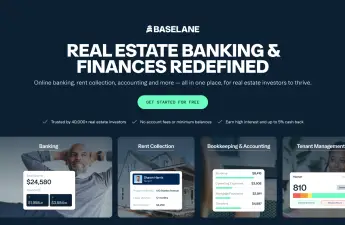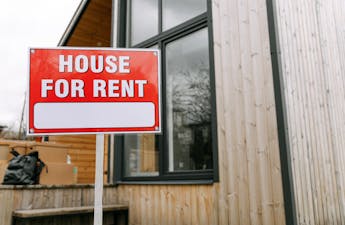Today’s technology has brought tools, such as rental property software, to independent landlords, making it easier to self-manage their properties, and upending the property management industry.
What do Property Managers Typically do for Landlords?
First let’s talk about what property managers traditionally do for rental property owners:
- Advertising and showing vacancies
- Taking applications and screening potential tenants, including:
- Making sure applicants meet the criteria to be accepted as renters, most
importantly having sufficient income. - Verifying identity
- Reviewing credit history
- Checking for criminal background and evictions
- Contacting rental references
- Making sure applicants meet the criteria to be accepted as renters, most
- Creating lease documents, compliant with local & national laws
- Collecting rents
- Coordinating maintenance
- Bookkeeping, documenting income and expenses
What Does it Cost to Hire a Property Manager?
As a general rule, property managers charge 8-10% of each month’s gross rent to manage a smaller rental property. They also often charge a “lease-up” fee when they fill a vacancy, which is typically 50-100% of one month’s rent. We have developed a cost calculator to help you explore what it would cost you to hire a property manager.
How Does Property Management Software Make These Tasks Easy for Landlords
So, let’s break those tasks down and talk about how technology is making each of these steps far easier for independent landlords to do themselves:
![]() Also Read: The Best Rental Property Management Software: Product Overviews
Also Read: The Best Rental Property Management Software: Product Overviews
Advertising and Vacancies:
- Landlords can create listings simply and quickly on platforms such as Zillow, Craigslist, Zumper, Padmapper, Redfin, Apartments.com, and many more.
- Property management software platforms such as TurboTenant, Avail, and RentRedi allow landlords to create one listing and have it “syndicated” to a broad range of these listing sites automatically.
- All of these sites offer free listings, and most have the option to upgrade for greater visibility, usually by increasing ad size and bringing it to the top of search results.
- Renters contact landlords with a few clicks and on platforms such as TurboTenant they are automatically sent a list of “prescreening” questions that help landlords decide whether they’re a viable potential tenant.
Applications and Screening:
- From any of these listing sites, except Craigslist, landlords can send a simple link to their application.
- Potential tenants fill out the application online, which only takes a few minutes.
- Landlords can write custom application questions on platforms such as TurboTenant and Avail.
- Applicants pay directly for screening reports and the landlord instantly receives a package with their personal information, residence & employment history, credit ratings, background & eviction checks, and more.
Lease Documents:
- The best property management software platforms provide lease documents and addenda that are compliant with each state, and some are customized down to the level of city laws.
- It’s simple and very fast to accept an applicant and move them into lease signing, all generated and electronically signed online.
- Landlords can also upload their own documents and have them signed online.
Collecting Rent:
- Once lease documents are signed, property management software platforms prompt both the landlord and tenant to set up payments. Landlords can usually designate multiple bank accounts and specify which one they want each rental to deposit to.
- Tenants simply need to input their bank information, and can setup automatic payments, which brings down the frequency of late or missed rent payments dramatically.
- Landlords who only want to collect rent online, and aren’t worried about advertising, leases, and more features, can choose a specialized service such as PayRent.
Managing Maintenance:
- This can still be a pain point for landlords, as it can be difficult to find good service providers and coordinate having repairs done.
- Property management software helps this process by providing a central communication point, where they can communicate with tenants and often service provides to get jobs done.
- Tenants can send photos and often videos, helping everyone know what the problem is and how to deal with it.
- Many platforms provide job tracking and reminders.
- RentRedi offers an add-on property maintenance service, which dispatches service providers and coordinates repairs so landlords don’t have to.
- “Hybrid” or “Virtual” property management services such as Hemlane and Marble also take the burden of maintenance off of the owner’s shoulders.
Bookkeeping and Accounting:
- All property management software logs rent payments, which creates an accounting of rental income.
- Most platforms give landlords the ability to input expenses and often upload receipts.
- Companies such as TurboTenant, RentRedi, Stessa, and Landlord Studio offer sophisticated and user-friendly accounting software designed for rental investments, that can replace the need for complex products such as Quickbooks. Now there’s really no good reason to use a spreadsheet or manual ledger!
Landlord Gurus Takeaway
As you can see, rental property software tools are truly shaking up the world of managing rentals. Each step of managing rental property is easier, safer, and more efficient than ever for landlords who want to self-manage. Resources such as screening reports, leases, and electronic payment services are now at the fingertips of any rental property owner. There are many software tools designed for the needs of independent landlords, and we’ve reviewed many of them on this site to help you make the choice that best fits your needs.
Disclosure: Some of the links in this post are affiliate links and Landlord Gurus may earn a commission. Our mission remains to provide valuable resources and information that helps landlords manage their rental properties efficiently and profitably. We link to these companies and their products because of their quality, not because of the commission.




